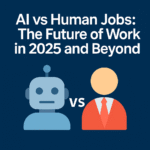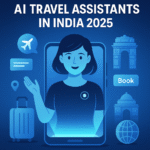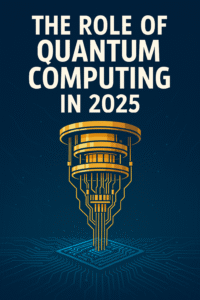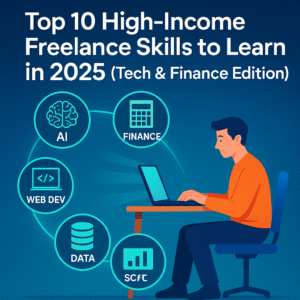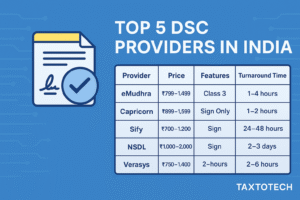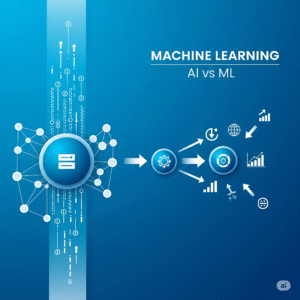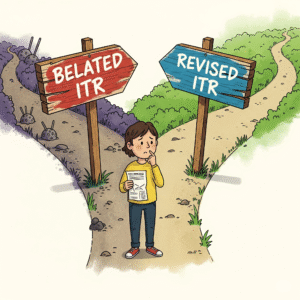Introduction: The AI-Powered Blogging Opportunity in 2025
Why Blogging is Still Profitable (and How AI Changes the Game) , do you want to earn money from blogging in 2025?.
Blogging in 2025 continues to offer a viable pathway to income, yet its landscape has undergone a profound transformation. The traditional model, where high traffic volume directly translated to revenue, is evolving. The contemporary approach places a significantly greater emphasis on strategic conversion and maximizing the value derived from each visitor.
Artificial Intelligence (AI) is not merely a supplementary tool but a fundamental force reshaping the industry. It empowers bloggers to enhance efficiency, ignite creativity, and expand their reach. By 2025, a substantial majority—estimated between 73% and 80% of businesses and individual bloggers—are projected to integrate AI into core content creation tasks, including ideation, outlining, and drafting. This widespread adoption has already yielded impressive results; businesses leveraging AI have reported a 60% reduction in production costs, a quadrupling of content output, and a 33% boost in return on investment. Furthermore, blogs that strategically implement AI have observed a fourfold increase in click-through rates and twice as many leads. This burgeoning ecosystem supporting AI-powered content creation is part of a larger generative AI market that is experiencing exponential growth, with projections indicating it will reach $22.2 billion by the end of 2025 and continue expanding at a Compound Annual Growth Rate of 44.20% from 2025 to 2034.
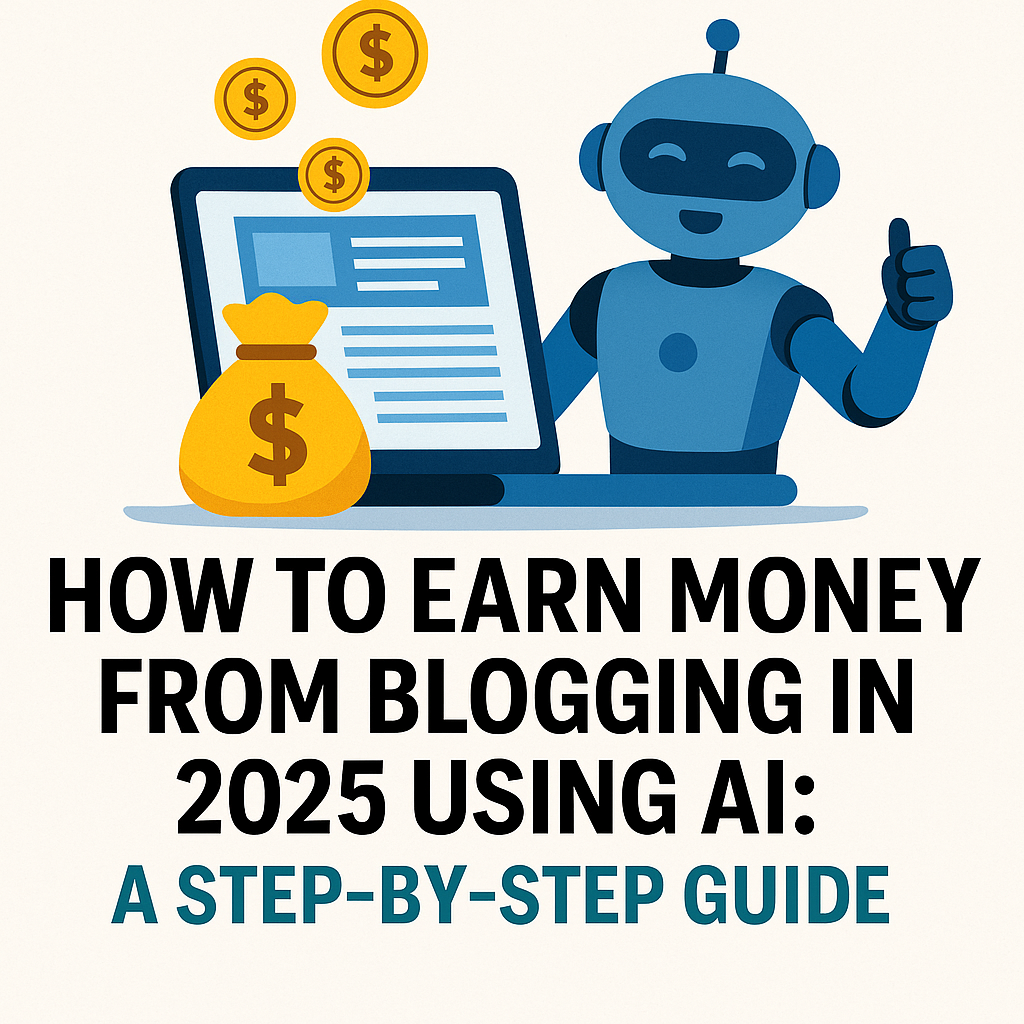
The New Mindset for Success: Beyond Just Traffic
Achieving success in 2025 necessitates adopting a “business mindset”. The focus has shifted from simply accumulating pageviews to constructing a robust “monetization system” and a “content hub designed to convert”. This strategic pivot involves meticulously aligning blog content with customer journeys, lead magnets, and various paid offerings, effectively transforming the blog into a conversion engine that performs akin to a paid advertisement. The primary objective becomes maximizing “value per visit” rather than merely increasing “visits per month”.
This evolving landscape presents a unique dynamic that some refer to as the “AI Paradox” in blogging profitability. The widespread adoption of AI tools is undeniably crucial for enhancing content production efficiency and achieving scale. However, this very proliferation of AI simultaneously intensifies the competition for organic search traffic. As more and more content is generated with AI, the sheer volume of online material makes it increasingly challenging for individual blogs to distinguish themselves and attract organic visitors. Concurrently, Google’s expanding AI Overviews and AI Mode are designed to provide direct answers within search results, leading to “zero-click searches” where users find the information they need without navigating to a blog. This dual effect—increased content volume and reduced click-throughs—erodes the traditional traffic-based monetization model. Consequently, bloggers must transition from a volume-centric approach, where ad revenue was tied to pageviews, to a value-centric approach, where every visitor is strategically guided towards a paid offering or lead magnet. This shift underscores the necessity of a more sophisticated “business mindset” and the development of a comprehensive “monetization system” to thrive in this new environment.
Step 1: Laying Your Foundation for Success
A. Choosing Your Profitable Niche (with AI Assistance)
A successful blogging venture begins with the selection of a focused niche that harmonizes personal interests with market demand and revenue potential. Writing about subjects that genuinely captivate or are deeply familiar to the blogger fosters the creation of authentic, valuable content and ensures long-term sustainability, mitigating the risk of burnout. The key lies in striking a balance between what the blogger enjoys exploring and what the target audience actively seeks.
AI tools are indispensable for pinpointing and validating profitable niches. These tools, such as Google Keyword Planner, Ubersuggest, Semrush, and Google Trends, enable comprehensive research into search volume, keyword difficulty, average cost-per-click (CPC), user search intent, and long-term growth trends. This data provides a robust foundation for assessing market demand and profitability. Further analysis involves examining online communities like Facebook Groups, Quora, and Reddit, particularly active subreddits with over 10,000 members, to discern the specific questions and topics that resonate with potential readers. Tools like AnswerThePublic can be particularly effective in uncovering these audience queries.
For 2025, several niches demonstrate significant potential. These include Artificial Intelligence (AI), Digital Marketing, Cybersecurity, Meal Prep, Wellness, Home Remodeling, Debt Management, Pet Health, B2B Sales, Weight Loss, Skincare, Productivity, Real Estate Investment, Financial Management, Self-Care, Career Development, Green Technology, Consumer Tech, Health, Books, Cryptocurrency, Remote Work, Web Design, and Passive Income. Notably, Artificial Intelligence itself stands out as the leading blog niche for 2025, driven by its exceptionally high search volume and diverse monetization avenues.
The increasing volume of AI-generated general content necessitates a strategic focus on “super-niche coverage.” As AI produces a vast quantity of broad content, success increasingly depends on attracting and retaining highly engaged audiences who are willing to invest in specialized insights. The overwhelming availability of general AI-generated material makes it challenging for broadly focused blogs to stand out. This drives consumers towards highly specialized content that offers profound value and addresses very specific needs. Therefore, selecting a “super-niche” is no longer merely a beneficial practice but a strategic imperative. This approach allows bloggers to cultivate deep “expertise, experience, authoritativeness, and trustworthiness” (E-E-A-T) , qualities that Google rewards and readers actively seek, leading to enhanced engagement and a greater propensity for conversion on paid offerings.
Furthermore, a unique opportunity arises from AI serving as both the tool and a top niche. The fact that AI is the leading profitable niche creates a self-reinforcing cycle for tech-savvy bloggers. Bloggers who master AI tools for content creation and optimization inherently develop the very “expertise” and “experience” required to effectively blog about AI. This practical engagement with AI provides foundational knowledge and firsthand experience with emerging tools, essential for success in the AI niche. This creates a powerful feedback loop: the process of learning to use AI for blogging provides the practical foundation and credibility to blog about AI, thereby attracting an audience interested in the very tools and trends being mastered. This dual role of AI—as both an enabler and a subject matter—offers a distinct competitive advantage for those who fully embrace its capabilities.
B. Selecting the Right Blogging Platform
The choice of blogging platform significantly influences both monetization potential and the ease of integrating AI tools. Several key factors should guide this decision. The platform should offer an intuitive interface, a WYSIWYG (What You See Is What You Get) editor for easy content creation, extensive template customization, robust plugin support, and integrated analytics tools. Strong built-in SEO features are crucial for optimizing meta descriptions, keywords, image alt text, and URL structures, all of which are vital for search engine visibility. Critically, the platform must support the blogger’s chosen monetization strategies, including seamless ad integration, affiliate marketing capabilities, and direct sales of products or services. Scalability is another important consideration, ensuring the platform can accommodate increasing traffic and evolving feature requirements as the blog grows. An active user community can also provide invaluable support for troubleshooting and learning. Finally, given the prevalence of mobile browsing, the platform must be mobile-friendly to ensure a convenient reading experience across devices.
Several platforms stand out for 2025. WordPress.org is often considered the best choice for full-time bloggers who desire maximum control, extensive customization options, and broad plugin support, including e-commerce solutions like WooCommerce and SEO tools like Yoast SEO. Wix is well-suited for small businesses focused on growth, offering tools to reinforce brand identity, boost traffic, and drive conversions. Medium excels in content distribution and provides built-in monetization through its Partner Program, facilitating digital product sales and affiliate marketing. Its articles also demonstrate strong performance in Google search rankings. Substack has become a popular choice for writers and content creators, offering both free and paid membership tiers, making it a cost-effective solution for community building and subscription-based content. Beyond dedicated blogging platforms, social media platforms like Reddit, Twitter/X, and LinkedIn, while not traditional blogging sites, increasingly support long-form content and offer partner programs or direct monetization avenues, providing immediate access to existing audiences.
The growing popularity of platforms with built-in communities and monetization programs highlights a trend toward “Audience-First Platforms” for rapid monetization. Traditional blogging platforms, such as self-hosted WordPress sites, offer extensive control but often demand significant effort in SEO and audience building. In contrast, platforms like Medium, Substack, Reddit, and Twitter are gaining traction due to their “easy content distribution,” established “Partner Program,” and “good community,” enabling bloggers to “make money without any marketplaces”. In an era where “traffic is getting harder to win” through traditional search , platforms that provide an immediate, engaged audience and streamlined monetization pathways—such as partner programs or paid newsletters—significantly reduce the barrier to entry and accelerate revenue generation for new bloggers. This indicates a strategic shift for many; instead of solely building an audience from scratch via SEO on a self-hosted site, they can leverage existing platform audiences to validate content ideas and monetization models more quickly, albeit potentially with less granular control.
Furthermore, the ideal platform increasingly functions as a “Monetization System Integrator.” The emphasis on building a “monetization system, not just content” and utilizing a “plug-and-play framework” is paramount for success. Platforms like Medium, for instance, offer “multiple monetization options,” encompassing a “Partner Program, affiliate marketing, selling your own memberships and courses, sponsorships”. When a platform natively integrates various monetization tools, it significantly reduces the complexity and technical overhead for bloggers seeking to diversify their income streams. This directly addresses the user’s request for guidance in a “very easy manner.” This means that the “best” blogging platform is not solely defined by its content publishing features but by its inherent capability to support a multi-faceted revenue strategy. This allows bloggers to dedicate more energy to content creation and audience engagement, and less to the technical intricacies of integrating diverse monetization methods, thereby smoothing the path to profitability.
C. Understanding Your Audience with AI
Effective audience research is foundational for developing tailored marketing efforts and content that truly resonates. This process extends beyond basic demographics—such as age, gender, location, income, and education—to encompass psychographics, which delve into an audience’s values, beliefs, interests, hobbies, lifestyle, aspirations, and goals. Identifying their specific “needs and pain points” is critical for crafting marketing messages and content that genuinely address their challenges and motivations.
AI significantly enhances the ability to understand and target audiences. AI tools can seamlessly integrate data from diverse sources, including Google Analytics, social media insights, surveys, and keyword research platforms, to analyze vast datasets, uncover intricate patterns, and overcome traditional data silos. This advanced analytical capability enables “micro-segmentation,” allowing AI to identify “small but impactful customer groups that traditional methods overlook,” leading to highly precise audience targeting. This moves beyond broad categories to cultivate a more nuanced understanding of individual customers. Moreover, AI’s predictive analytics capabilities can analyze past behaviors to “anticipate needs” and forecast future customer actions, facilitating proactive engagement and content delivery. Tools like BuzzSumo can reveal popular content formats and headlines, SEMrush assists with competitor analysis, AnswerThePublic helps uncover audience questions, and SurveyMonkey supports direct feedback collection. Hotjar offers “Experience Analytics” and “Voice of Customer” features to provide deeper insights into user behavior. Finally, A/B testing, informed by AI findings, allows for continuous refinement of strategies, ensuring that approaches remain effective and aligned with the audience’s evolving preferences.
The ability of AI to predict audience needs and identify micro-segments transforms audience understanding from reactive analysis to proactive content creation, leading to what can be termed “Anticipatory Content.” While traditional audience research focuses on defining who the audience is and what they currently care about , AI-driven segmentation extends this by identifying “micro-segments” and “anticipating needs” through the analysis of past behaviors to predict “future customer actions”. This predictive capability allows bloggers to develop content
before a widespread explicit demand emerges, positioning them as thought leaders and early movers in nascent topics. This means content strategies can become substantially more focused and effective, minimizing wasted effort on content that fails to resonate and boosting engagement and conversion rates by delivering hyper-relevant content at the optimal moment. This fundamentally shifts blogging from a reactive to a proactive, data-driven discipline.
However, the extensive data collection required for AI-driven audience insights also mandates strict adherence to privacy regulations and transparent practices to maintain user trust, highlighting the “Ethical Imperative of Data Privacy in Hyper-Personalization.” AI-driven segmentation relies heavily on analyzing “large datasets,” including “purchase history, online interactions, and social media behavior”. This intensive data processing raises significant “data privacy concerns” and necessitates “compliance with privacy regulations such as The General Data Protection Regulation (GDPR)”. The more granular and predictive AI-driven audience insights become, the greater the volume of personal data processed. Mishandling this data or a lack of transparency can result in severe reputational damage and legal repercussions. For bloggers, building trust—a core component of E-E-A-T—with their audience is paramount. Therefore, ethical data practices, clear privacy policies, and robust security measures are not merely legal obligations but fundamental components of a sustainable AI-powered blogging strategy, ensuring that the benefits of personalization are not achieved at the expense of user trust.
Step 2: Creating High-Quality, AI-Enhanced Content
A. AI for Idea Generation and Outline Creation
AI tools are invaluable for overcoming writer’s block and streamlining the content creation process, particularly in idea generation and outline structuring. For brainstorming, AI can assist in crafting attention-grabbing headlines, identifying blog post topics, and generating content ideas tailored to a specific target audience and product descriptions. Tools such as ChatGPT, Gemini, Claude, HyperWrite, Jasper AI, and Copy.ai are highly effective for this initial phase. Some advanced tools, like AskYourPDF, can even interact with existing documents to spark new ideas and uncover connections across various files, leveraging the blogger’s accumulated knowledge.
Once a core idea is selected, AI can significantly aid in developing detailed, SEO-optimized outlines or comprehensive content briefs. It is often beneficial for the blogger to first draft an initial outline to infuse personal ideas and structure before refining it with AI tools. Tools like RightBlogger’s Post Outline tool or Frase.io’s outline builder can then assist in expanding this draft, suggesting subheadings with SEO considerations and ensuring a logical, coherent structure. When selecting AI tools for these tasks, it is important to look for features that offer customization, support collaborative AI functionalities, and allow adaptation to the blogger’s specific writing style and brand voice through precise prompts.
The quality of AI-generated content is directly proportional to the specificity and detail of the human-crafted prompts, making prompt engineering a critical skill for bloggers. While numerous AI tools are available for content generation , it is explicitly stated that tools like ChatGPT “are only ever going to be as good as the prompts that you use. The more detailed and specific you are in your prompts, the better your blog post will be”. This principle is further reinforced by the understanding that “Effective prompt engineering can significantly enhance the quality and relevance of the generated content”. AI models, despite their vast training data, rely on user guidance to produce relevant and valuable output. Generic prompts will inevitably lead to generic content, whereas detailed, contextual prompts yield more precise, original, and valuable results. This means that merely possessing AI tools is insufficient; bloggers must invest time in mastering effective communication with these AIs. Prompt engineering thus emerges as a specialized skill that distinguishes high-quality, AI-assisted content from low-quality, generic output, directly influencing content originality and relevance.
This dynamic also highlights the “Hybrid Approach” as the gold standard for content creation. While AI can “cut content creation time in half” and “quadruple output” , it is crucial to avoid blindly copying AI output. The process demands thorough “fact-checking,” the integration of “original insights and first-hand experiences,” and strict adherence to E-E-A-T principles. AI excels at speed and scale, but it inherently lacks genuine human experience, critical thinking, and ethical judgment. Human oversight is therefore necessary to inject authenticity, correct any inaccuracies, and ensure the content truly serves the audience’s needs while complying with Google’s quality guidelines. This “hybrid approach” is not a temporary solution but the evolving best practice for blogging in 2025. It strategically leverages AI’s strengths for efficiency while mitigating its weaknesses, enabling bloggers to produce high-volume, high-quality, and trustworthy content that stands out in an increasingly crowded digital landscape.
B. Drafting and Refining Content with AI
AI writing tools significantly accelerate the drafting process, encompassing everything from concise social media posts to extensive long-form articles. For general-purpose content, ChatGPT by OpenAI serves as a versatile all-rounder, proficient in generating natural text, outlines, and assisting with brainstorming. Claude, on the other hand, excels in producing long-form, in-depth projects, ensuring content consistency and technical precision across lengthy articles.
For content with a marketing or SEO focus, Writesonic is a specialized tool for creating SEO-friendly blog posts, ad copy, and website content, featuring integrated SEO tools and keyword optimizers. Jasper AI is highly effective for scaling content creation, maintaining a consistent brand voice, and seamlessly integrating with SEO tools like Surfer SEO. Copy.ai is recognized for its ability to rapidly produce quality short-form content such as introductions, summaries, and headlines, though it is generally less suited for extensive long-form writing. For refinement and polishing existing text, Grammarly’s AI features are invaluable; they correct grammar, spelling, and punctuation, and offer advanced suggestions for tone adjustment and sentence rewrites, acting as a 24/7 editor. Additionally, AI can efficiently repurpose content into various formats, transforming a single blog post into multiple social media updates or video scripts, thereby maximizing content reach.
Beyond mere text generation, AI tools are increasingly enabling bloggers to maintain a consistent brand voice across all content, which serves as a significant competitive differentiator. Tools like Jasper AI and Writesonic offer explicit “Brand Voice” features and “Brand voice customization”. StoryChief also provides capabilities to detect and apply a consistent brand voice. Maintaining a consistent tone and style is crucial for establishing brand recognition and building reader trust. In a digital environment saturated with AI-generated content, a consistent and unique brand voice helps a blog stand out and cultivate a recognizable identity. AI’s ability to learn and apply this voice at scale not only saves considerable time but also ensures a uniformity that would be challenging to achieve manually. This means AI is not merely a productivity tool but a strategic asset for brand building. Bloggers who effectively train AI to replicate their unique voice will create a more cohesive and memorable experience for their audience, fostering stronger connections and loyalty, which directly supports monetization efforts.
Despite AI’s advancements, human oversight remains an indispensable ethical and quality gatekeeper. While AI-generated content can sometimes be “on par with or even better than human-written material” , AI tools are “known to hallucinate, offering incomplete and inaccurate information” , and may even “make things up and present them as facts”. Therefore, it is imperative to “fact-check thoroughly” , to “not publish unreviewed content” , and to “review generated content carefully for accuracy”. The concept of a “human-in-the-loop” approach for editorial decisions is emphasized. AI models generate responses based on statistical patterns and lack genuine understanding or real-world experience. This inherent limitation means they can produce plausible but incorrect information or inadvertently perpetuate biases present in their training data. Consequently, human review is not just a quality control step but an ethical imperative. It ensures accuracy, prevents the dissemination of misinformation, and safeguards against algorithmic bias. This reinforces the hybrid approach, where AI serves as a powerful assistant, but the ultimate responsibility for content quality, integrity, and ethical considerations rests firmly with the human blogger.
C. Optimizing for Search Engines (SEO) with AI
AI is fundamentally transforming Search Engine Optimization (SEO), moving beyond outdated keyword stuffing tactics to a more nuanced, intent-based approach. For keyword research, AI models are better equipped to analyze complex user queries, detect emerging Search Engine Results Page (SERP) trends, and identify high-impact keywords by deeply understanding context and user intent. Tools such as Google Keyword Planner, Semrush, KWFinder, Ubersuggest, and Jasper AI (especially with its Surfer SEO integration) are highly effective in finding relevant terms and seamlessly incorporating them into content. Beyond individual keywords, AI-powered topic clustering helps group related content into “pillar pages” and “topic clusters,” significantly boosting a website’s overall relevance and authority on a given subject. AI can also intelligently identify content gaps within a topic and suggest new content to fill these voids, ensuring comprehensive coverage that aligns with user intent. Scalenut’s AI-powered clustering system, for instance, automatically groups keywords based on their relevance.
AI also simplifies many on-page SEO tasks and enhances technical aspects. For meta tags and schema markup, AI tools like Surfer SEO and RankMath can automate the creation of optimized meta descriptions, title tags, and structured data, which can lead to increased click-through rates and faster indexing by search engines. In terms of internal linking, AI can identify opportunities to connect related content within a site, helping to build a logical site structure and effectively distribute “link value” across pages. Furthermore, AI plays a role in technical SEO by assisting in improving critical site performance metrics such as loading speed, interactivity, and visual stability—all of which are essential factors in Google’s ranking algorithms.
Google’s expanding AI Overviews and the introduction of “AI Mode” fundamentally alter the SEO landscape, shifting the focus from merely ranking for keywords to strategically positioning content to be cited by AI. Google’s AI Overviews are expanding to encompass all types of queries, including commercial ones, and Google is actively testing the inclusion of “ads within AI overviews,” which will inevitably “push organic results even further down the SERP”. This means that “Keyword rankings and ranking positions on SERPs will lessen in importance as brands focus more on aligning content with search intent in a brand awareness play to secure brand mentions in AI-generated answers”. The prediction is that “The SERP will eventually become completely AI-driven / generated”. If AI directly answers user queries, users may not click through to websites. Therefore, the strategic objective shifts from merely securing a click to becoming the authoritative source that AI cites or summarizes. This demands content that is exceptionally relevant, comprehensive, and demonstrates robust E-E-A-T. Bloggers must adapt their SEO strategy from a “positional obsession” to a focus on content quality, depth, and structured data that is easily digestible and citable by AI. This also involves understanding “sense searches” and “conversational queries” to ensure content appears in more focused AI responses.
The rise of voice search and visual AI necessitates optimizing content beyond traditional text to include audio and interactive visual elements for broader discoverability, leading to what can be called the “Multimodal Content Imperative.” “Voice-First Strategies” are gaining prominence, requiring content optimization for voice search and the consideration of creating audio versions of blog posts. Similarly, “Visual Elements” are evolving from static AI images to “AR-enhanced content,” and “short-form, snackable video content is going to completely take over in 2025”. As AI transforms search into a more conversational and visual experience—for instance, Google’s AI Mode with its advanced reasoning and multimodality —content discoverability will extend beyond traditional text-based queries. This means bloggers must proactively diversify their content formats. It’s no longer sufficient to just write articles; they must also consider producing podcasts, video summaries, infographics, and interactive visuals. AI tools can significantly assist in repurposing content into these diverse formats , ensuring that the blog remains discoverable and engaging across the evolving landscape of search and content consumption channels.
D. Ensuring Quality, Originality, and Trust (E-E-A-T)
Google places a strong emphasis on E-E-A-T (Experience, Expertise, Authoritativeness, and Trustworthiness) as a critical standard for high-quality content. While AI can efficiently draft content, human oversight is absolutely crucial for several reasons. Firstly, thorough fact-checking is paramount. AI systems are known to “hallucinate” or provide incomplete and inaccurate information; therefore, all facts, figures, and statistics generated by AI must be rigorously double-checked. Secondly, injecting original insights and personal experience is vital. AI cannot replicate genuine personal experience or provide true expert opinion. Bloggers must infuse their unique ideas, first-hand experiences, and thought leadership into the content to make it truly valuable. Thirdly, maintaining brand voice and authenticity is key. This involves refining readability, adjusting tone, and eliminating generic, overused phrases that can make AI-generated content sound robotic. The ultimate goal is to produce “authentic, human marketing” that deeply resonates with the audience. Finally, content should prioritize helpfulness and reader intent, focusing on providing genuine value, answering questions, and teaching new skills, rather than merely stuffing keywords.
It is imperative to avoid generic content and plagiarism. Blindly copying and pasting AI-generated content without thorough review is a “recipe for low-quality content, accusations of plagiarism, and spreading misinformation”. Since AI-generated material can sometimes reproduce existing content, running outputs through plagiarism detection tools is an essential step. Bloggers should also actively strive to create content that offers unique insights, rather than simply rehashing existing articles.
Google’s continued emphasis on Experience, Expertise, Authoritativeness, and Trustworthiness (E-E-A-T) functions as a critical filter against low-quality, generic AI content, making human input indispensable for ranking. Google’s algorithms, powered by RankBrain, BERT, and MUM, prioritize relevance, authority, and user engagement. Google explicitly supports AI-generated content “as long as it’s original, high-quality, and designed with readers in mind”. However, AI tools, by themselves, cannot demonstrate genuine “experience” or “authoritativeness” ; they can “hallucinate” or lack nuance. To rank well and build trust, content must transcend mere factual accuracy to demonstrate genuine human insight and credibility. This means human writers must infuse their unique perspectives and experiences, effectively “AI-proofing” their content against the generic output of unedited AI. E-E-A-T is not merely a guideline but a strategic necessity. Bloggers who prioritize adding human expertise and unique value will differentiate themselves in a content-saturated market, cultivating a loyal audience and achieving stronger search engine visibility, even as AI becomes ubiquitous.
As AI is projected to generate a staggering 90% of online content by 2025 , genuine human connection and authentic storytelling will become increasingly valuable and sought-after, creating a premium for content that clearly demonstrates human authorship. This phenomenon can be described as the “Authenticity Premium” in an AI-dominated content landscape. There is a strong prediction that “people would become tired and bored of reading AI text which basic human touch” and will actively “search for human generated content as well with real human input”. “Authentic, human marketing” is expected to “win mindshare”. The sheer volume and potentially generic nature of AI-generated content will lead to “over-saturation” , making it increasingly difficult for brands to stand out. This scarcity of a genuine human voice and unique perspective will naturally elevate its value. Consequently, bloggers who prioritize building real trust, sharing personal stories, and demonstrating tangible experience will command a higher “authenticity premium.” This entails prioritizing quality over sheer quantity, focusing on “saying real things to real people with a unique voice” , and cultivating a loyal community that values genuine human connection over algorithm-driven content. This shift will make trust and authenticity key drivers of long-term profitability.
Step 3: Monetizing Your Blog with AI-Driven Strategies
A. Diversifying Your Income Streams for Stability
Relying on a single income stream poses significant risks in the dynamic blogging landscape. It is advisable to diversify revenue by incorporating at least two, and ideally three, distinct monetization methods. This approach, often likened to not putting “all your eggs in one basket,” provides crucial financial stability should one revenue stream experience a downturn. The contemporary blogging mindset emphasizes building a comprehensive “monetization system” or a “plug-and-play framework” specifically designed to convert traffic into revenue, moving beyond the sole pursuit of pageviews. The focus has shifted to maximizing “value per visit” rather than merely increasing “visits per month”.
The expansion of AI Overviews, which reduce organic clicks, necessitates that bloggers strategically design their content to funnel visitors towards higher-value conversions, making each visit count more. This can be understood as the “Conversion-First” Imperative in an AI-Disrupted Search Landscape. AI Overviews are increasingly prevalent and contribute to “zero-click searches” , meaning fewer direct clicks to blogs from search results. The era where “traffic equals money” is receding; the current emphasis is on “value per visit” and constructing a “monetization system”. If fewer users are clicking through, those who
do click must be highly qualified and guided towards a specific action. This mandates designing blog content not just for informational purposes, but as an integral part of a sales funnel. Bloggers must integrate clear calls-to-action (CTAs) for lead magnets, product sales, or service inquiries directly within their content. This strategic shift ensures that even with potentially reduced traffic volume, the quality of engagement and conversion rates are maximized, directly impacting profitability.
Furthermore, combining subscriptions with one-time purchases (such as digital products or services) offers a more robust and adaptable revenue strategy in a dynamic market, illustrating a “Hybrid Monetization” Model for Resilience. It is observed that “Subscriptions alone aren’t enough anymore. 35% of apps now mix subscriptions with consumables or lifetime purchases, and the trend is growing”. Bloggers have a diverse array of monetization options at their disposal, including advertising, affiliate links, sponsored posts, direct product and service sales, and memberships or donations. Relying solely on a single income stream, particularly volatile ones like display ads , introduces financial instability. By combining recurring revenue streams (like subscriptions) with high-ticket or one-time sales (such as digital products or consulting services), bloggers establish multiple pathways to capture value from different audience segments and cater to various purchase intents. This “hybrid monetization” approach provides greater financial resilience and allows bloggers to address a wider range of customer preferences, from casual readers to dedicated patrons, thereby optimizing overall revenue potential.
B. Selling Products and Services (Digital & Physical)
Selling proprietary digital products represents an excellent strategy for building a profitable blog and generating passive income, primarily because these products incur no inventory, shipping, or production costs. Popular examples of digital products include eBooks (which can be repurposed blog posts or original content), printables (such as planners or worksheets), templates (for websites, social media, or business resources), online courses, and memberships. The digital product market is continually evolving, now encompassing interactive experiences and subscription-based content.
Effective product development and validation are critical. Bloggers should focus on their areas of expertise and passions while simultaneously researching the specific problems faced by their target audience. Validating product ideas before committing significant time and resources is crucial. This can be achieved by conducting keyword research to gauge search volume, checking Google Trends for growing interest in related topics, exploring Facebook groups and industry forums to understand customer needs, and analyzing product reviews. A recommended approach is to start small and iterate based on market feedback. For selling, bloggers can utilize e-commerce plugins (e.g., WooCommerce for WordPress) or dedicated platforms like Shopify’s Digital Downloads. Creating compelling landing pages that clearly articulate the product’s value and promoting these offerings via email, blog posts, and social media are essential for driving sales.
Beyond digital products, leveraging Print-on-Demand (POD) services for physical merchandise offers another easy and enjoyable monetization avenue. POD allows bloggers to sell custom merchandise without the need to hold inventory; POD partners handle the printing and shipping directly to buyers worldwide.
Digital products and services increasingly leverage the blogger’s demonstrated E-E-A-T, transforming their knowledge into scalable and high-value offerings. This can be described as the “Expert-as-Product” Model. Digital products typically include eBooks, courses, and printables, while services encompass coaching, consulting, and freelance work. These offerings are frequently “related to your niche” or capitalize on “your unique strengths and knowledge”. For instance, success in the AI niche demands “tech fluency, talent for simplifying complex topics, constant learning mindset, firsthand experience with emerging tools”. A blogger’s established expertise and experience (E-E-A-T) within a niche naturally position them to create valuable digital products or offer consulting services that directly address their audience’s problems, building upon the trust already cultivated through their content. This creates a powerful monetization pathway where the blogger’s intellectual capital becomes the primary product. While AI can assist in content creation for these products (e.g., drafting eBooks, outlining courses), the core value proposition originates from the human expert’s unique insights and experience, making it a highly profitable and sustainable model.
Furthermore, AI tools for keyword research and trend analysis enable bloggers to validate digital product ideas with data, minimizing risk before significant investment. This highlights AI’s role in “Product-Market Fit” Validation. Product validation is crucial to avoid investing time and money into ventures that may not succeed. Validation methods involve “Keyword research” and “Google Trends” to assess search volume and growing interest. AI tools are extensively used for keyword research and trend prediction. By leveraging AI-powered keyword and trend analysis, bloggers can identify specific problems or demands within their chosen niche
before creating a product. This data-driven approach significantly reduces guesswork and increases the likelihood of developing a digital product that genuinely meets market needs. AI shifts product development from intuitive guesswork to an informed, strategic process. This allows bloggers to create highly targeted digital products that are more likely to sell, optimizing their monetization efforts and ensuring a higher return on their content creation investment.
C. Leveraging Affiliate Marketing with AI
Affiliate marketing enables bloggers to earn a commission when their readers purchase products or services through unique referral links embedded in their content. The strategy involves carefully selecting relevant affiliate programs, such as Amazon Affiliates, that offer favorable commissions and conversion rates. Crucially, affiliate links should be integrated seamlessly into high-value content, including product reviews and comparisons, comprehensive how-to guides, and curated resource lists. This approach ensures that the recommendations feel natural and genuinely beneficial to the reader, rather than intrusive.
AI is rapidly becoming an indispensable tool for affiliate marketers, particularly for conversion optimization. Machine learning capabilities can dynamically adjust campaigns in real-time, optimizing for peak performance and ensuring efficiency. AI also facilitates smarter affiliate hunting by analyzing vast datasets to pinpoint top-performing affiliates, assess audience engagement, evaluate niche fit, and predict conversion rates. Moreover, AI assists in personalization at scale, helping to deliver content that feels like a personal recommendation from a trusted friend, which consistently drives higher engagement and conversions.
In an AI-saturated content landscape, affiliate marketing success increasingly relies on building genuine trust and fostering long-term partnerships, moving beyond purely transactional link placements. This can be termed the “Trust-Driven Affiliate” Model. “Transparency Isn’t Optional Anymore” in affiliate marketing, and it is understood that “Honesty builds trust. Trust builds sales”. The emphasis has shifted from “Quick Cash Grabs” to “Long-Term Partnerships,” with brands and affiliates increasingly “teaming up for the long haul”. Google’s emphasis on E-E-A-T also reinforces this. As AI makes it easier to generate generic product promotions, consumers become more discerning. They will naturally gravitate towards bloggers who demonstrate genuine experience, expertise, authoritativeness, and trustworthiness by recommending products they genuinely believe in and have thoroughly tested. This approach cultivates loyalty and higher conversion rates. Therefore, affiliate marketing in 2025 is less about the sheer volume of links and more about the quality of recommendations and the depth of trust established with the audience. Bloggers should prioritize promoting products that align with their values (e.g., eco-conscious brands ) and focus on providing detailed, unbiased reviews rather than simply listing products.
AI tools will refine affiliate strategies by optimizing campaigns and personalizing recommendations, but human judgment remains crucial for ethical integration and audience connection. This highlights AI as an “Affiliate Performance Optimizer,” not a Replacement. AI is becoming an “unpaid intern” for affiliate marketing, capable of handling “dynamic campaign optimization” and “personalization at scale”. However, affiliate marketing “works best when it feels natural” , and links should be integrated “into high-value content” rather than “stuffing links randomly”. While AI can identify optimal products and target audiences, the human blogger’s role is to weave these recommendations into compelling, authentic content that resonates personally with readers. Blindly automating affiliate links without context or genuine value is unlikely to succeed. AI frees the blogger from tedious optimization tasks, allowing them to concentrate on the creative and trust-building aspects of affiliate marketing. This means leveraging AI for data-driven insights but retaining human control over content integration and ethical disclosure (e.g., using “no follow” links for sponsored content ), thereby ensuring long-term credibility and profitability.
D. Maximizing Advertising Revenue
Advertising involves displaying advertisements on a blog, generating revenue when visitors view or click on them. While it typically requires substantial and consistent traffic to become highly lucrative, it can provide a steady income stream with minimal ongoing effort once set up.
Choosing the right ad networks and optimizing ad placement are critical for maximizing revenue. For beginners or blogs with low traffic, Google AdSense offers the easiest setup with no minimum traffic requirements and often instant approval. Infolinks is another suitable option for low-traffic blogs, known for its non-intrusive in-text ads and zero traffic requirement. Media.net also serves as a strong AdSense alternative, particularly for blogs with a significant US audience.
For mid-tier blogs, typically those with 10,000 to 50,000 pageviews per month, Monumetric (requiring a minimum of 10,000 pageviews per month and offering higher RPMs than AdSense) and Ezoic (beneficial for growing blogs aiming for improved RPMs) are good choices. High-traffic blogs, those with 50,000 or more sessions per month, can access premium networks like Mediavine (50,000 sessions/month, popular with lifestyle bloggers, offering high income potential) and Raptive (formerly AdThrive, requiring over 100,000 pageviews per month for premium publishers), both of which provide significantly higher revenue potential. Other options include Taboola, Outbrain, and Adversal for content recommendations, PropellerAds for various ad formats, BuySellAds for direct ad space sales, and Sovrn for automatic affiliate link insertion. Regardless of the network, optimizing ad placement for user experience (UX) and consistently increasing traffic are crucial for enhancing ad revenue.
Display advertising remains a “Volume Play” that is increasingly challenged by AI Search. While it can be viable for high-traffic blogs, its profitability faces a direct threat from AI Overviews, making it a less reliable primary income stream for new or smaller blogs. Advertising revenue is directly proportional to “ad impressions” and necessitates “steady blog traffic” to be lucrative, with high-tier networks imposing significant traffic minimums. However, AI Overviews are expanding to all queries, including commercial ones, and Google is testing “ads within AI overviews,” which “will push organic results even further down the SERP”. This means “Search traffic is getting squeezed”. If AI provides direct answers and even displays ads within search results, fewer users will click through to blogs, directly impacting pageviews and ad impressions. This diminishes the potential for ad revenue, particularly for blogs that have not achieved massive scale. For most bloggers, display advertising should be considered a supplementary income stream rather than the sole focus. The “losing game” of relying purely on ad clicks becomes even more pronounced in 2025, compelling bloggers to pursue higher-value monetization strategies like product sales or services that capture more value per visit.
With increasing competition and AI’s focus on user experience, intrusive or poorly placed ads will negatively impact engagement and potentially SEO, necessitating careful AI-assisted optimization. This highlights the “UX-First” Approach to Ad Placement. Ad networks like Monumetric and Mediavine emphasize “user-friendly ad placement” and a “focus on UX + page speed”. Google’s algorithms, powered by AI, prioritize relevance, authority, and user engagement. AI Mode also offers “real-time content adaptation” and “predictive audience insights” to enhance user experience. Intrusive ads can lead to high bounce rates and a poor user experience, which AI-driven algorithms will detect and penalize. Conversely, well-placed, non-intrusive ads (such as Infolinks’ in-text ads ) that do not disrupt the content flow are less likely to deter users. Bloggers must leverage AI insights (e.g., from Google Analytics or Hotjar ) to strategically place ads in a manner that maximizes revenue without compromising user experience. This involves continuously monitoring engagement metrics and being prepared to adjust ad density and formats based on user behavior, ensuring that ads complement, rather than detract from, the content.
E. Exploring Memberships, Donations, and Sponsored Content
Offering exclusive content, specialized resources, or community access through memberships or subscriptions is a powerful monetization strategy. To maintain member engagement and encourage renewals, it is essential to continuously update exclusive posts and provide fresh value. Platforms like Substack are particularly well-suited for implementing such models. In 2025, dynamic AI-driven paywalls are becoming more sophisticated, tailoring access precisely based on user data and effectively driving subscription growth. Retention is a key priority for publishers in 2025, with successful tactics including flexible payment options (weekly, monthly, or annual plans) and the ability for users to pause rather than cancel subscriptions.
Sponsored content and brand partnerships involve brands paying bloggers to feature their products or services within a blog post. This can be a highly lucrative method, often encompassing product reviews, integrated photographs, links to the brand’s website, and promotion across social media channels. To secure these partnerships, bloggers should proactively pitch their brand to businesses via email and social media networking. Crucially, ethical disclosure is paramount: sponsored links should always be set to ‘no follow’ to comply with Google’s guidelines. Transparency in all monetization efforts is vital for building and maintaining audience trust.
In an era of content abundance, highly specialized, in-depth “super-niche coverage” becomes a major draw for consumers willing to pay for exclusive, focused content. This highlights the “Niche Depth” Advantage for Subscription Models. “Specialist content, which allows you to dig deeper, can also be a major draw” for subscriptions, as consumers “want less distraction and more of what they really care about”. The “days of easy subscriber growth are over,” and publishers must now prioritize retention. When general information is readily available (often through AI summaries), readers are less inclined to pay for it. However, they are often willing to pay for unique, expert-level insights, deep dives, or exclusive access within a very specific niche that directly addresses their specialized interests. Therefore, bloggers aiming for subscription or membership models should intensify their focus on their chosen niche, providing unparalleled depth and unique perspectives that AI cannot easily replicate. This approach cultivates a highly engaged, loyal community more likely to convert into paying members, making niche expertise a direct driver of recurring revenue.
Explicitly disclosing sponsored content and maintaining overall transparency are not just regulatory requirements but crucial for building and sustaining audience trust, which underpins all monetization efforts in the long term. This is the “Ethical Transparency” Imperative for Monetization. For sponsored posts, links “should always be set to ‘no follow'” to comply with Google rules , and “Transparency Isn’t Optional Anymore” for affiliate marketing. Building “real trust with your audience instead of relying on generic content” is key to affiliate marketing success , and E-E-A-T principles, particularly Trustworthiness, are paramount for content quality. In an environment where AI can generate content that might blur the lines between editorial and promotional, clear disclosure of sponsored content and affiliate links reinforces the blogger’s credibility. A lack of transparency can erode trust, leading to audience skepticism and ultimately harming all monetization strategies. Ethical practices thus become a strategic advantage. Bloggers who are upfront about their monetization methods build a stronger, more loyal audience base. This trust translates into higher conversion rates for products, services, memberships, and more effective sponsored partnerships, as the audience knows they are receiving genuine recommendations.
Step 4: Promoting Your Blog and Engaging Your Audience with AI
A. AI for Social Media Content and Scheduling
AI tools are revolutionizing social media management, with over 80% of content recommendations now powered by AI, significantly enhancing user engagement. AI offers powerful capabilities for repurposing content and automating posts. It can transform blog posts into various social media formats, including YouTube videos, podcasts, infographics, carousel posts for Instagram and LinkedIn, and X (formerly Twitter) threads. Tools like Opus Clip can efficiently create eye-catching short-form video clips from existing longer videos.
For content creation and scheduling, AI tools can generate post copy, designs, and hashtags in mere seconds. They provide AI-generated captions and visuals, branded templates, and integrated post scheduling features. Tools such as Feedhive leverage AI to suggest improvements based on engagement data, optimize post timing, and even predict content performance before it goes live. Specific tools include Predis.ai for end-to-end AI content creation, Ocoya for AI copywriting, design, and scheduling, and Feedhive for content recycling and performance prediction. ChatGPT can be used to create custom GPTs for tailored copy, while Veo 3, Runway, and Sora excel in text-to-video generation. StoryChief facilitates multi-channel publishing and social media campaign generation from existing blog URLs, and Buffer is effective for tailoring posts to each specific channel. Flick acts as a social media AI copilot, and Publer offers text-to-image AI capabilities.
The dominance of short-form video content on social platforms, such as TikTok and Instagram Reels, necessitates leveraging AI to rapidly transform blog content into engaging visual formats. This is the “Visual-First, Short-Form” Imperative for Social Media. “Short-form, snackable video content is going to completely take over in 2025” , and a growing number of people, particularly Gen Z, are turning to platforms like TikTok or YouTube for product reviews as their initial search. AI tools such as Veo 3, Runway, Sora, and Opus Clip enable “ultra-realistic text-to-video creation” and make it “easy to create eye-catching content from videos I’ve already made”. Traditional text-based blog posts have limited reach on these visually driven social platforms. AI provides the necessary efficiency and capabilities to quickly convert written content into dynamic video or visual formats, making it accessible and engaging for diverse audiences where they spend their time. Bloggers must therefore adopt a “multimodal content strategy” where blog posts serve as foundational content that is then repurposed and optimized for various platforms using AI. This ensures maximum reach and engagement, driving traffic back to the blog or directly monetizing through social channels.
AI’s ability to forecast content performance and optimize post timing allows bloggers to make data-backed decisions for social media promotion, maximizing impact and reducing guesswork. This highlights AI as a “Predictive Promotion Engine.” Feedhive, for example, uses AI to “predict how well your content will perform before it goes live” and to “optimise post timing”. AI tools also provide “real-time insights into user behavior”. Instead of relying on intuition or guesswork about what content will resonate or when to publish, AI provides data-driven predictions. This empowers bloggers to prioritize promotional efforts on content most likely to succeed and to schedule posts for peak engagement times, leading to higher visibility and increased traffic. AI transforms social media promotion from a reactive or intuitive process into a proactive, analytical one. This means bloggers can allocate their promotional resources more effectively, ensuring their content reaches the right audience at the right time, thereby increasing blog traffic, engagement, and ultimately, monetization potential.
B. Personalized Content Recommendations and Engagement
AI plays a crucial role in delivering “hyper-personalized consumer experiences” that significantly boost engagement and conversion rates. This capability is transforming how blogs interact with their audience. AI-driven recommendation engines, such as Recombee, analyze browsing habits, content interactions, and even location in real-time to surface the most relevant stories for each user. This ensures that every user receives a content feed uniquely tailored to their interests.
Beyond basic personalization, AI provides predictive insights by identifying patterns and behaviors that extend beyond traditional demographics, enabling a deeper, more nuanced understanding of individual customers. It can predict future customer actions, allowing for proactive content delivery that anticipates user needs. AI also enhances direct engagement by crafting recommended greetings, personalized chats, and dynamically adjusting ad content. Furthermore, it can generate comments in multiple languages and tones to foster dynamic discussions and build community engagement. For strategic implementation, bloggers should define distinct audience segments based on demographics, behavior, or preferences, create content variation rules to serve different content to these segments, and consistently use A/B testing to measure the effectiveness of personalized content.
AI enables blogs to move beyond static content delivery to provide real-time, adaptive, and highly personalized experiences that significantly increase user engagement and time on page. This represents the “Dynamic Content Experience” as the Engagement Standard. AI-driven personalization has been shown to boost profitability, with 90% of marketers recognizing its value. It can lead to a “40% reduction in bounce rates” and a “30% increase in engagement”. AI recommendation engines analyze “browsing habits, content interactions, and even location in real time” to deliver “highly relevant stories”. By continuously adapting content recommendations and interactions based on individual user behavior, AI creates a more engaging and sticky experience. Users feel understood and are more likely to spend more time on the site, explore additional content, and return. This enhanced engagement directly translates to higher ad impressions, increased likelihood of affiliate clicks, and greater conversion rates for products and services, making personalization a core driver of monetization.
While AI-driven personalization is powerful for engagement, it simultaneously creates a heightened ethical responsibility for bloggers to ensure data privacy, transparency, and to actively avoid algorithmic bias. This is the “Ethical Personalization” Imperative. AI personalization “thrives on data,” including “user data, customer data, product information, and assets uploaded”. This extensive data collection raises significant “data privacy concerns” and necessitates “compliance with privacy regulations such as The General Data Protection Regulation (GDPR)”. Algorithmic bias can also manifest in “discriminatory ad targeting”. The more data collected and analyzed for personalization, the greater the risk of privacy breaches or the perpetuation of biases. Users are increasingly aware of these issues and demand greater control over their data. Bloggers must not only implement robust data security measures but also be transparent about how user data is collected and used for personalization. Ethical AI use becomes a critical component of maintaining audience trust and avoiding reputational damage, ultimately safeguarding the long-term viability of AI-driven monetization strategies.
Ethical Considerations and the Human Touch in AI Blogging
Addressing Bias, Data Privacy, and Transparency
While Artificial Intelligence offers immense potential for blogging, its widespread adoption also introduces significant ethical considerations that must be proactively addressed.
One primary concern is Algorithmic Bias. AI systems learn from vast datasets, and if these datasets reflect historical biases (e.g., related to race, gender, or age), the AI will inevitably perpetuate these biases in the content it generates (e.g., language, imagery) or in its ad targeting. This is not merely an ethical misstep; it can be detrimental to a business, alienating potential customers and damaging brand reputation.
Another critical area is Data Privacy and Security. AI systems, particularly those designed for personalization, rely heavily on large volumes of data, including user data, customer information, product details, and assets uploaded to platforms. This raises concerns about how such data is collected, stored, used, and protected. Risks include unauthorized access, data breaches, and the use of data for purposes beyond what users have explicitly consented to. Compliance with stringent regulations like the General Data Protection Regulation (GDPR) is crucial. Bloggers must be transparent about their data practices and ensure robust security measures are in place.
Finally, Transparency in AI Use is becoming increasingly important. While Google supports AI-generated content provided it is original and high-quality , there is an ethical imperative to disclose when AI is utilized. This is particularly true for sensitive topics (often categorized as YMYL – Your Money Your Life) or for thought leadership pieces, where readers expect genuine human opinion and expertise.
Maintaining Authenticity and Credibility in an AI-Driven Landscape The human touch remains irreplaceable in blogging. Despite AI’s rapid advancements, human creativity, emotional intelligence, and unique perspectives cannot be fully replicated. Over-reliance on AI can lead to generic, repetitive content that lacks emotional depth, making it harder for a blog to stand out in a crowded digital space.
Google’s continued emphasis on E-E-A-T (Experience, Expertise, Authoritativeness, and Trustworthiness) serves as a critical standard for AI-generated content. Raw AI content inherently cannot demonstrate these qualities; therefore, human editing, rigorous fact-checking, and the infusion of personal experience are essential to meet these benchmarks.
With AI potentially generating 90% of online content by 2025 , “authentic, human marketing” will achieve better cut-through and deliver longer-term value. There is a growing sentiment that people may become “tired and bored of reading AI text” and will actively seek “human generated content with real human input”.
Best practices for AI blogging involve implementing a “hybrid approach,” where AI drafts content, but humans infuse their expertise and refine the output. The focus should remain on helpfulness, aligning with reader intent, and telling authentic customer stories. Regularly reviewing AI-generated content for accuracy and originality is also paramount.
The combined human-AI workflow is not just for efficiency but represents a necessary safeguard against AI’s inherent limitations, ensuring ethical content creation and maintaining trust. This is the “Hybrid Approach” as an Ethical Imperative. AI can “hallucinate” , produce “errors or overlook important details” , and perpetuate “algorithmic bias”. The “hybrid approach” involves using AI to draft but crucially infusing “personal expertise and research” and maintaining a “strong editorial process to ensure quality and accuracy.” AI lacks consciousness, true understanding, and ethical reasoning. Human oversight is essential to catch factual errors, correct biases, ensure content aligns with human values, and provide the nuanced perspective AI cannot. This means that the “human-in-the-loop” is not merely a preference but a fundamental requirement for responsible AI blogging. Ethical considerations are deeply intertwined with content quality and credibility; a blog that fails to address these will ultimately lose audience trust and, consequently, monetization potential.
As AI commoditizes generic content, genuine human voice, unique experiences, and transparent practices will create a premium, making “authentic, human marketing” a powerful competitive advantage. This is the emergence of the “Authenticity Premium” in Content. AI is expected to generate 90% of online content by 2025 , leading to an “over-saturation of generic content”. However, “authentic, human marketing” will “win mindshare” , and people will “value AI content but at the same [time] search for human generated content as well with real human input”. When AI can produce vast quantities of text, the distinguishing factor becomes the unique, irreplaceable human element—personal stories, genuine opinions, empathy, and lived experience. Content that clearly signals human authorship and integrity will stand out from the algorithmic noise. This creates an “authenticity premium” where content demonstrating clear E-E-A-T and a distinct human voice will command more attention, engagement, and trust. Bloggers who embrace this will build stronger communities, foster deeper loyalty, and unlock higher-value monetization opportunities that generic AI content cannot access. This means focusing on quality and genuine connection.
Conclusion and Recommendations
Earning money from blogging in 2025, particularly with the integration of AI, demands a strategic and adaptable approach. The era of simply generating high traffic for ad revenue is evolving, giving way to a focus on maximizing value per visit and building robust monetization systems. AI is not just a tool for efficiency; it is a transformative force that, when used judiciously, can enhance every stage of the blogging journey from content creation to promotion and audience engagement.
To succeed, bloggers must embrace a hybrid model that marries AI’s speed and analytical power with indispensable human creativity, expertise, and ethical oversight. The proliferation of AI-generated content necessitates a pivot towards hyper-niches, where specialized, human-infused insights command a premium. Trust, authenticity, and adherence to E-E-A-T principles will be critical differentiators in a content-saturated digital landscape.
Recommendations for Profitable Blogging in 2025 with AI:
Strategic Niche Selection:
Action: Choose a “super-niche” that balances personal passion with high market demand and clear monetization potential.
AI Application: Utilize AI tools like Google Keyword Planner, Semrush, and AnswerThePublic to identify trending topics, analyze search volume, and uncover specific audience questions within your chosen niche. This data-driven approach will help validate your niche and identify content gaps.
Platform Optimization for Monetization:
Action: Select a blogging platform that offers both ease of use and robust, integrated monetization options.
AI Application: Prioritize platforms that simplify the integration of diverse revenue streams (e.g., native ad support, e-commerce plugins for digital products, membership features). Consider platforms with built-in communities (like Medium or Substack) for faster audience acquisition and monetization.
Audience-Centric Content Strategy:
Action: Develop a deep understanding of your audience’s demographics, psychographics, needs, and pain points to create highly relevant content.
AI Application: Employ AI for advanced audience research and micro-segmentation. Use tools like BuzzSumo, SEMrush, and Hotjar to analyze user behavior, predict future needs, and tailor content and marketing messages proactively.
High-Quality, AI-Enhanced Content Creation:
Action: Implement a hybrid content creation workflow where AI assists with drafting and ideation, but human expertise ensures accuracy, originality, and a unique brand voice.
AI Application: Use AI writing assistants (e.g., ChatGPT, Writesonic, Jasper AI, Claude) for brainstorming, outline generation, and initial drafts. Crucially, master “prompt engineering” to guide AI effectively. Always fact-check AI-generated content, infuse personal experiences, and refine for E-E-A-T. Leverage AI for content repurposing into various formats (e.g., blog to video, social posts).
Adaptive SEO for AI Search:
Action: Shift SEO focus from merely ranking for keywords to optimizing content for AI Overviews and conversational queries, aiming to be cited as an authoritative source.
AI Application: Utilize AI-powered SEO tools (e.g., Surfer SEO, Scalenut) for advanced keyword research, topic clustering, and on-page optimization. Prioritize creating comprehensive, structured content that is easily digestible by AI. Explore multimodal content creation (audio, video, interactive visuals) to align with evolving search behaviors.
Diversified Monetization Portfolio:
Action: Implement at least two to three distinct income streams to ensure financial stability and maximize revenue per visit.
AI Application:
Digital Products/Services: Use AI for market validation (keyword research, trend analysis) before creating eBooks, courses, or offering consulting. AI can also assist in drafting content for these products.
Affiliate Marketing: Leverage AI for dynamic campaign optimization and personalized recommendations, but ensure human judgment maintains trust and ethical integration of links. Focus on high-value, trust-driven recommendations.
Advertising: Choose ad networks appropriate for your traffic volume. Use AI insights to optimize ad placement for user experience, ensuring ads complement content rather than detract from it.
Memberships/Sponsored Content: Develop deep niche expertise to attract paying members. Use AI to analyze audience data for dynamic paywalls. For sponsored content, AI can assist in content creation, but human transparency and ethical disclosure are non-negotiable.
AI-Powered Promotion and Engagement:
Action: Strategically promote your blog content across multiple channels, leveraging AI to maximize reach and engagement.
AI Application: Utilize AI social media management tools (e.g., Predis.ai, Feedhive, StoryChief) to repurpose blog content into visual, short-form formats (videos, carousels), generate captions, and schedule posts. Employ AI for predictive analytics to optimize post timing and content performance. Implement AI-driven personalized content recommendations on your blog to increase user engagement and time on page.
Ethical AI Implementation:
Action: Prioritize ethical considerations, including addressing algorithmic bias, ensuring data privacy, and maintaining transparency in all AI applications.
AI Application: Implement robust data security measures and be transparent about how user data is collected and used for personalization. Regularly audit AI-generated content for bias and inaccuracies. Always disclose when AI is used, especially for sensitive topics or thought leadership, to maintain credibility and audience trust.
By meticulously following these steps and integrating AI as a powerful assistant rather than a complete replacement, bloggers can navigate the evolving digital landscape of 2025, build strong, authentic connections with their audience, and establish sustainable, diversified income streams. The future of profitable blogging lies in the intelligent and ethical collaboration between human creativity and artificial intelligence.
Frequently Asked Questions (FAQ)
Can a complete beginner still earn money from blogging in 2025 using AI?
Absolutely. In 2025, AI tools have significantly lowered the barrier to entry. Beginners can use AI to generate content ideas, create structured drafts, and even assist with technical aspects like SEO. While experience helps, the key is to use AI as a powerful assistant, not a replacement for your own unique voice and strategic direction. The learning curve is now more about smart prompting and editing than writing every word from scratch.
What is the primary role of AI in the blogging process? Is it just for writing?
While content generation is a major function, AI’s role extends far beyond just writing. In 2025, bloggers use AI for:
Niche Selection: Analyzing market trends to find profitable, low-competition topics.
Keyword Research: Identifying long-tail keywords and user intent.
Content Outlining: Creating structured, SEO-friendly article outlines.
Image Generation: Creating unique, royalty-free images for posts.
SEO Optimization: Analyzing content for SEO scores and suggesting improvements.
Content Repurposing: Turning a blog post into social media captions, video scripts, or email newsletters.
How can I ensure my content is original and doesn’t get penalized by Google for being “AI-written”?
This is a critical point. Google’s focus is on helpful, high-quality content, regardless of how it’s created. To stay safe and provide value, you must:
Add Personal Experience: Inject your own stories, opinions, and unique insights that an AI cannot replicate.
Fact-Check Everything: AI can sometimes generate inaccurate information (“hallucinate”). Always verify facts, stats, and claims.
Edit for Voice and Tone: Heavily edit the AI-generated draft to match your brand’s unique voice. Don’t just publish the raw output.
Use AI as a Co-creator: Treat the AI as a research assistant or a first-draft writer, not the final author. The final piece must be substantially yours.
What are the most effective ways to monetize an AI-powered blog in 2025?
The core monetization strategies remain, but AI can accelerate them. The top methods include:
Niche Affiliate Marketing: Use AI to quickly produce high-quality product reviews and comparisons for specific affiliate products.
Programmatic Ads: With AI helping you scale content production, you can increase traffic faster, making display advertising (like Google AdSense or Mediavine) more lucrative.
Selling Digital Products: Use AI to help you create eBooks, online courses, or templates that you can sell directly to your audience.
Sponsored Content: A high-traffic, professional-looking blog (which AI can help build) is more attractive to brands for sponsored posts.
What are the essential AI tools every blogger should consider in 2025?
The toolkit for an AI blogger typically includes:
A powerful AI Writer: Such as advanced versions of GPT (e.g., GPT-5), Jasper, or Copy.ai for generating text.
An SEO Tool with AI features: Like SurferSEO, MarketMuse, or NeuronWriter to optimize content.
An AI Image Generator: Such as Midjourney, DALL-E 3, or Stable Diffusion for creating unique visuals.
A Grammar and Style Checker: Grammarly or ProWritingAid to refine your final drafts.
How much human effort is actually required? Can I fully automate my blog?
While you can automate many tasks, you cannot (and should not) fully automate a successful blog. The human element is your competitive advantage. You should expect to spend significant time on:
Strategy and Planning: Choosing topics and content direction.
Prompt Engineering: Crafting detailed prompts to get the best output from AI.
Editing and Fact-Checking: Ensuring quality and accuracy.
Community Engagement: Responding to comments and building a relationship with your audience. Think of it as shifting your role from a writer to a content strategist and editor-in-chief.
How can AI help me choose a profitable blog niche?
AI tools can analyze vast amounts of data to spot trends. You can use them to:
Analyze search volume and competition for thousands of keywords simultaneously.
Identify “niche clusters” – groups of related topics with high commercial intent.
Scan forums like Reddit or Quora to find common problems people are trying to solve, which can form the basis of a profitable niche.
Generate a list of potential blog niches based on your personal interests and then provide data on their potential profitability.
How does using AI change my approach to SEO?
AI makes SEO more efficient and data-driven. Instead of guessing, you can use AI to:
Perform ‘Semantic’ SEO: Find and include conceptually related terms, not just exact-match keywords.
Analyze SERPs (Search Engine Results Pages): AI tools can instantly analyze the top-ranking pages for a keyword and tell you the ideal word count, headings, and topics to cover.
Generate Schema Markup and Meta Descriptions: Automate the creation of technical SEO elements that help search engines understand your content.
What is the realistic initial cost to start a blog using AI in 2025?
The costs can vary, but here is a realistic breakdown:
Domain and Hosting: ₹2,000 – ₹5,000 per year.
AI Writer Subscription: A good quality AI writer can range from ₹1,500 to ₹8,000 per month.
SEO Tool Subscription: AI-powered SEO tools often start around ₹4,000 per month.
AI Image Generator: Some have free tiers, but for heavy use, subscriptions might cost ₹800 – ₹2,500 per month. You can start with a leaner budget by utilizing free tiers initially, but to scale effectively, expect to invest at least ₹5,000 – ₹10,000 per month in tools.
How do I future-proof my AI blogging career against new AI advancements?
To stay relevant, focus on what AI can’t do.
Build a Personal Brand: People connect with people. Build your brand on social media and through your unique voice.
Develop a Community: Create a loyal following through an email list, a Facebook group, or other platforms. A community is a defensible asset.
Focus on Strategy, Not Just Production: Become an expert at high-level content strategy, market analysis, and prompt engineering.
Embrace Lifelong Learning: Continuously experiment with new AI tools and platforms as they emerge to stay on the cutting edge.


